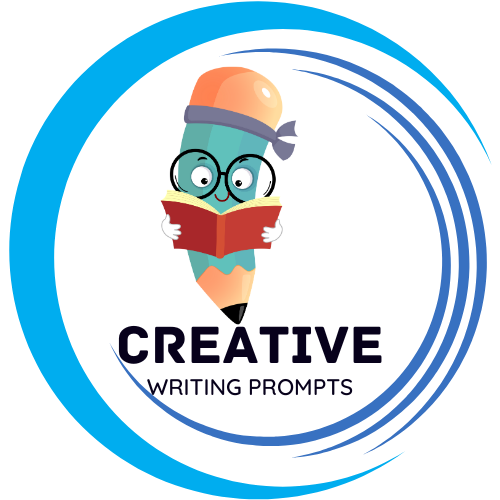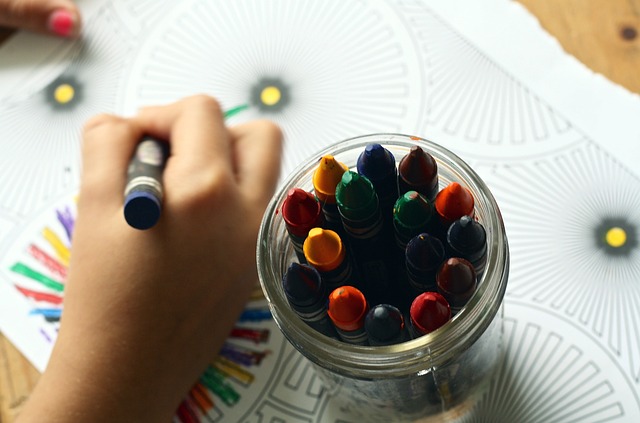Are you looking for fun and effective ways to ignite your kindergartener’s creativity? Look no further than picture prompts for writing! These exciting tools are designed to unleash your child’s imagination, helping them explore and express their ideas through storytelling. From captivating images to playful characters, picture prompts for writing kindergarten provide the perfect spark to inspire early creativity. Get ready to embark on a journey of imagination as we dive into the endless possibilities of using picture prompts to fuel your child’s love for writing from a young age.
Contents
- The Importance of Picture Prompts in Kindergarten Writing
- Enhancing Creativity and Imagination through Visual Stimulation
- Creating a Language-Rich Environment with Picture Prompts
- Developing Vocabulary and Language Skills with Picture Prompts
- Encouraging Storytelling and Narrative Skills through Visual Inspiration
- Fostering Writing Fluency and Confidence with Picture Prompts
- Engaging Kindergarteners in the Writing Process with Visual Prompts
- Integrating Art and Writing: Exploring Self-Expression with Picture Prompts
- Frequently Asked Questions
- Insights and Conclusions
The Importance of Picture Prompts in Kindergarten Writing
In kindergarten, writing skills are just beginning to develop, and one effective way to foster this growth is through the use of picture prompts. Picture prompts are images or illustrations that inspire students to write by giving them a visual starting point for their ideas. These engaging tools have immense importance in the kindergarten classroom because they encourage creativity, enhance vocabulary development, and improve overall writing proficiency.
Cultivating creativity: Picture prompts allow young writers to tap into their imaginations and create unique stories. By giving them a visual prompt, children can explore different narratives, settings, and characters. For example, a picture of a castle might inspire one student to describe a princess trapped inside, while another student might envision a dragon guarding hidden treasure. The variety of possibilities empowers kindergarteners to think outside the box and develop their creativity.
- Expanding vocabulary: Using picture prompts exposes students to new words and encourages them to incorporate these words into their writing. As they describe the objects, people, or events depicted in the picture, kindergarteners naturally expand their vocabulary. In addition, they learn to use adjectives – words that describe – to bring greater detail and richness to their writing. This process not only helps them communicate more effectively but also enhances their overall language development.
- Improving writing skills: Picture prompts provide a concrete starting point and structure that can boost a child’s writing confidence. They offer clear visual cues that aid in organizing thoughts and ideas, making it easier for kindergarteners to progress from drawing to writing sentences or short paragraphs. This step-by-step approach supports the development of important writing skills, such as sentence construction, punctuation, and grammar. With regular practice using picture prompts, young writers gradually gain proficiency and become more comfortable expressing themselves through writing.
Overall, the significance of picture prompts in kindergarten writing cannot be overstated. They inspire creativity, foster vocabulary growth, and promote writing proficiency in an engaging and supportive way. By incorporating picture prompts into the classroom, educators can help their young students develop a love for writing that will continue to flourish as they progress through their academic journey.
Enhancing Creativity and Imagination through Visual Stimulation
In a world filled with endless distractions, it can be challenging to tap into our innate creativity and imagination. However, visual stimulation has proven to be a powerful tool in unlocking these hidden abilities within us. By engaging with visually captivating content, we can awaken our senses, explore new perspectives, and ignite the fires of imagination.
Visual stimulation can take many forms, from admiring breathtaking artworks to immersing ourselves in vibrant cinematic experiences. It allows us to break free from the mundane and venture into unexplored realms of creativity. When we expose ourselves to visually stimulating environments, our brains become attuned to finding beauty and inspiration in the simplest of things. This, in turn, fuels our potential to innovate, problem-solve, and view the world through a fresh lens.
How can visual stimulation enhance our creativity and imagination?
- Unleashing dormant ideas: Visual stimulation helps us tap into the limitless vault of our subconscious minds, awakening dormant ideas and concepts that were once buried. When we allow our imaginations to wander through visually rich landscapes, we unlock the potential to make unique connections and think outside the box.
- Expanding horizons: By exposing ourselves to a variety of visual stimuli, we widen our creative horizons and push the boundaries of our imagination. Whether it’s exploring diverse art styles, absorbing nature’s intricate patterns, or immersing ourselves in virtual worlds, our minds become open to new possibilities and ideas that were previously unimagined.
- Fostering curiosity: Visual stimulation captivates us, inviting us to question, analyze, and dig deeper. It sparks our curiosity and encourages us to seek knowledge and inspiration from different sources. The endless imagery that the world offers fuels our desire to learn more, encouraging us to take the path less traveled and embrace innovation.
Creating a Language-Rich Environment with Picture Prompts
In order to create a language-rich environment for language learners, picture prompts can be a powerful tool. These visual aids engage learners and stimulate their imagination, making language learning more enjoyable and effective. Picture prompts provide a context for learners to practice their language skills and encourage them to express themselves in a creative way. So, let’s explore how to make the most out of picture prompts and create an immersive language-learning experience!
1. Choosing the Right Pictures:
- Select images that are relevant to the learners’ age and language level.
- Vary the complexity of the images to cater to different proficiency levels.
- Ensure the visuals are clear, engaging, and open to interpretation.
2. Promoting Interaction:
- Encourage learners to describe the picture using appropriate vocabulary and grammar.
- Facilitate discussions by asking open-ended questions related to the image.
- Assign group activities where learners collaborate and create stories based on the picture prompts.
- Provide feedback and guidance to help learners improve their language skills during the activities.
By incorporating picture prompts into language lessons, educators can create an environment that fosters linguistic development, enhances critical thinking, and boosts learners’ confidence. So, let your creativity flow and immerse learners in the captivating world of language learning through picture prompts!
Developing Vocabulary and Language Skills with Picture Prompts
Pictures are not just worth a thousand words; they can also be powerful tools for developing vocabulary and language skills. Whether you are a teacher looking for innovative ways to engage your students or a language learner seeking to expand your linguistic abilities, picture prompts offer a fun and effective approach to language learning. Here are a few reasons why incorporating picture prompts into your learning routine can be beneficial:
- Visual Stimulus: Pictures provide a visual stimulus that helps learners make connections between objects, actions, and words. By associating words with images, vocabulary retention is enhanced, and learners can easily visualize and remember the meaning of words.
- Contextual Learning: Picture prompts provide a context for language learning. They can spark discussions, writing exercises, and role-playing activities, allowing learners to engage with the language in a more meaningful way. This context helps learners grasp the nuance and usage of vocabulary words within real-life scenarios.
- Learning for All Levels: Picture prompts can be adapted to suit learners of different proficiency levels. Beginners can focus on basic vocabulary, while more advanced learners can explore complex concepts and descriptive language. This versatility makes picture prompts a valuable tool for language classrooms and self-study.
Next time you are looking for a creative and engaging way to improve your vocabulary and language skills, give picture prompts a try. You’ll be surprised how effective and enjoyable it can be to learn through visual cues and interactive discussions. Remember, a picture is not just a picture; it’s a doorway to a world of words and linguistic growth!
Encouraging Storytelling and Narrative Skills through Visual Inspiration
Storytelling is an invaluable skill that nurtures creativity, boosts imagination, and develops effective communication abilities. At our Visual Inspiration workshop, we aim to empower individuals of all ages and backgrounds with the tools and techniques needed to become captivating storytellers. By harnessing the power of visual inspiration, we enable participants to unlock their imaginations and craft engaging narratives.
In our workshop, we explore various visual forms, such as paintings, photographs, and illustrations, to stimulate the storytelling process. We encourage participants to closely examine these visuals, identifying the emotions, themes, and details depicted. Through guided discussions, we inspire individuals to draw connections between these visuals and their personal experiences, allowing them to weave unique stories that captivate audiences. Our facilitators provide helpful prompts and guidance throughout the workshop to stimulate the imagination and unlock the storytelling potential within each participant. Whether you’re a seasoned storyteller or new to the craft, our Visual Inspiration workshop offers a dynamic and inclusive space to develop and refine your narrative skills.
During our sessions, participants have the opportunity to:
- Expand their storytelling vocabulary: By exploring a range of visual inspirations, individuals can develop a rich arsenal of storytelling techniques and vocabulary that will enhance their ability to communicate their ideas more effectively.
- Build empathy and perspective: Engaging with different visual narratives encourages participants to step into the shoes of the characters portrayed. This helps to develop empathy and a deeper understanding of diverse perspectives, which in turn strengthens their ability to create well-rounded and relatable stories.
- Refine narrative structure: Through analyzing visual compositions and storylines, participants gain insight into how to structure their own narratives. They learn how to build rising action, create compelling conflicts, and deliver satisfying resolutions, resulting in impactful storytelling.
Fostering Writing Fluency and Confidence with Picture Prompts
One powerful tool that can help students develop writing fluency and boost their confidence is the use of picture prompts. These creative visuals provide a starting point for students to explore their imagination, encourage critical thinking, and ignite their writing skills. Let’s dive into the reasons why picture prompts are an effective method for enhancing writing abilities:
- Stimulates creativity: Picture prompts can inspire students to think outside the box, as they prompt them to visualize unique scenarios based on the imagery provided.
- Develops descriptive skills: By analyzing the details in a picture prompt, students learn to describe people, places, and objects in a vivid and engaging manner, enhancing the richness of their writing.
- Enhances storytelling abilities: Picture prompts offer a narrative framework that encourages students to develop characters, plotlines, and settings, fostering their storytelling skills.
- Builds vocabulary: Engaging with picture prompts exposes students to new words and concepts, broadening their lexicon and allowing them to experiment with diverse vocabulary in their writing.
Integrating picture prompts in writing activities not only sparks students’ interest but also helps them break free from writer’s block and fear of a blank page. Encouraging students to interpret a picture in their own unique way and connecting it to their personal experiences significantly supports the development of their writing fluency and unlocks their confidence as authors.
Engaging Kindergarteners in the Writing Process with Visual Prompts
Writing is an essential skill that kindergarteners need to develop, and using visual prompts can be a great way to engage them in the writing process. Visual prompts, such as pictures or illustrations, provide young learners with inspiration and ideas for their writing, making the process more enjoyable and meaningful. Here are some effective strategies to use visual prompts to engage kindergarteners in their writing journey:
- Storytelling with Pictures: Encourage kindergarteners to create stories based on a series of pictures. Show them a sequence of images and ask them to describe what they see happening in each picture. This exercise helps them build their narrative skills and enhances their ability to create coherent and sequential stories.
- Descriptive Writing: Show kindergarteners a visually stimulating image and ask them to describe what they see. Encourage them to use descriptive words to capture the details, colors, and emotions depicted in the picture. This activity not only enhances their vocabulary but also nurtures their ability to write descriptively.
Furthermore, visual prompts can be used to foster creativity and critical thinking skills in kindergarteners. By brainstorming and discussing ideas related to the visual prompts, children can develop their imagination and learn to express their thoughts in writing. Incorporating visual prompts into the writing process not only makes writing more enjoyable for kindergarteners but also builds a strong foundation for their literacy development.
Integrating Art and Writing: Exploring Self-Expression with Picture Prompts
Enhancing Self-Expression through the Fusion of Art and Writing
Integrating art and writing can open up a world of possibilities for self-expression and creativity. This unique combination allows individuals to tap into their imagination and communicate their thoughts and emotions in a visual and textual way. Picture prompts, in particular, serve as a powerful tool to inspire and ignite the creative spark within.
By combining art and writing, individuals are able to:
- Explore emotions: Picture prompts provide a visual stimulus that can evoke deep emotions. When we engage in both art and writing, we have the opportunity to explore and express these emotions in a multi-dimensional way, allowing for a richer and more profound understanding of ourselves.
- Exercise creative thinking: Art and writing both require us to think outside the box and stretch our imaginations. By integrating these two mediums, we stimulate our creative thinking and develop a unique approach to expressing our ideas and stories.
- Develop a personal narrative: Picture prompts provide a starting point, a visual cue that can spark a story or an idea. By combining our artistic vision with our writing skills, we are able to create a personal narrative that reflects our individual experiences and perspectives.
Whether you consider yourself an artist or a writer, or even if you have never explored either of these mediums before, integrating art and writing through picture prompts offers a limitless playground for self-expression. This powerful fusion encourages us to step outside our comfort zones, embrace new perspectives, and embark on a creative journey of self-discovery.
Frequently Asked Questions
Q: What are picture prompts for writing in kindergarten?
A: Picture prompts for writing in kindergarten are visual cues or images that serve as inspiration for young children to start writing and express their creative ideas.
Q: Why are picture prompts beneficial for kindergarten students?
A: Picture prompts are highly beneficial for kindergarten students as they provide a starting point for writing, allowing children to develop their imagination, storytelling abilities, and language skills. It also helps them understand visual elements and connect them with written words.
Q: How can picture prompts spark early creativity in kindergarteners?
A: Picture prompts can ignite early creativity by giving kindergarteners visual stimulation, enabling them to think outside the box and create unique stories, characters, or descriptive narratives. They encourage children to explore their imagination and develop confidence in their writing abilities.
Q: Are picture prompts suitable for all kindergarteners?
A: Yes, picture prompts are suitable for all kindergarteners, regardless of their writing skills or language proficiency. They can be adjusted to meet the needs of each child, allowing them to experience success and support their individual development.
Q: Can picture prompts be used in a classroom setting?
A: Absolutely! Picture prompts are commonly used in kindergarten classrooms as a way to engage students in writing activities. Teachers can introduce picture prompts during group lessons or provide individual prompts to encourage independent writing practice.
Q: Are there any specific strategies to implement while using picture prompts in kindergarten?
A: Yes, there are various strategies that can be utilized when using picture prompts in kindergarten. Teachers can encourage discussions about the picture, ask open-ended questions, or guide students to identify different elements within the image, helping them generate ideas for their writing.
Q: Can picture prompts be used in conjunction with other writing exercises?
A: Yes, picture prompts can be integrated with other writing exercises to create a well-rounded curriculum. For example, teachers can combine picture prompts with story starters or writing prompts related to specific themes, allowing children to explore different writing styles and genres.
Q: How can parents support their kindergarteners with picture prompts at home?
A: Parents can support their kindergarteners with picture prompts at home by engaging in conversations related to the picture, encouraging their child to describe what they see or asking them to create a story based on the image. This helps foster creativity, critical thinking, and language development outside the classroom.
Q: Are there any resources available for finding picture prompts for kindergarten writing?
A: Yes, there are numerous resources available online, such as educational websites and teacher forums, that provide a wide range of picture prompts suitable for kindergarten writing. Additionally, teachers often create their own prompts tailored to their students’ needs.
Insights and Conclusions
In conclusion, picture prompts offer a fun and engaging way for kindergarten students to enhance their creative writing skills from an early age.

